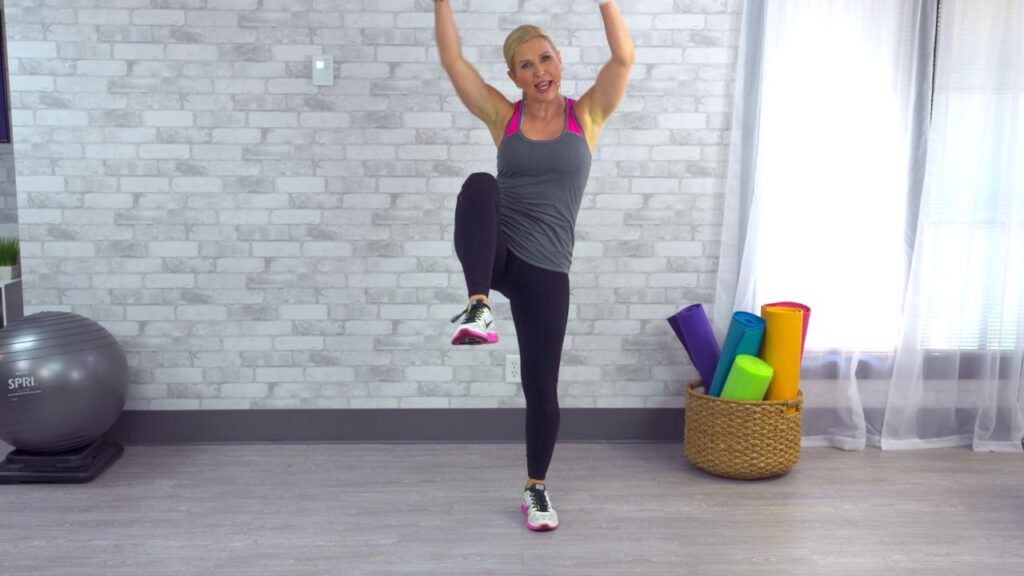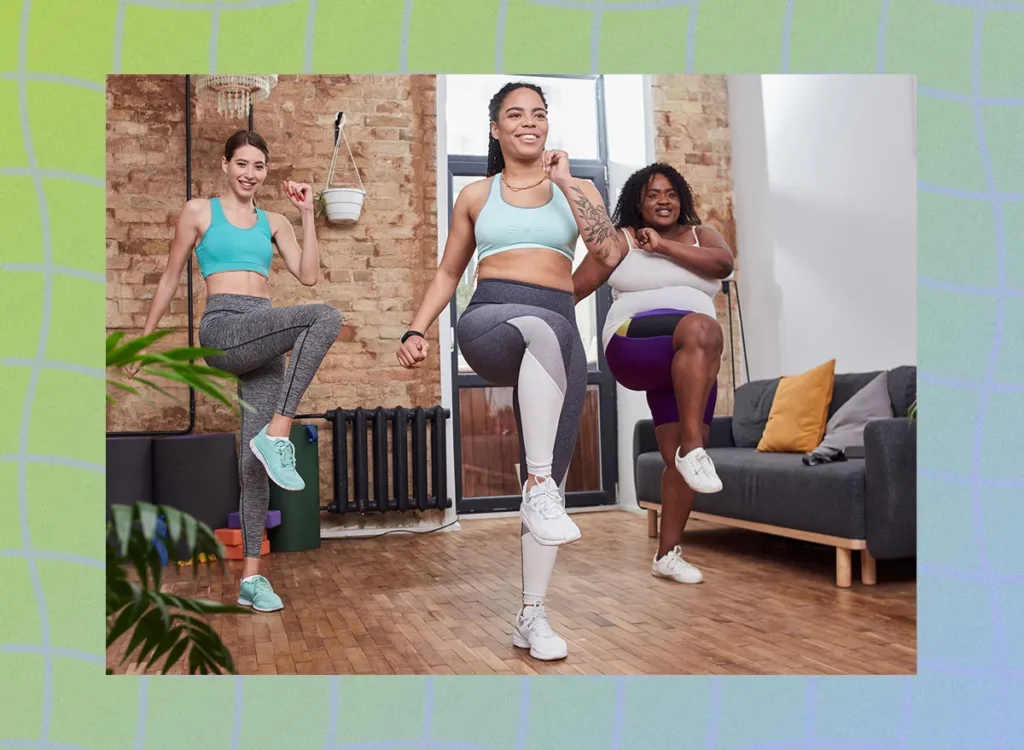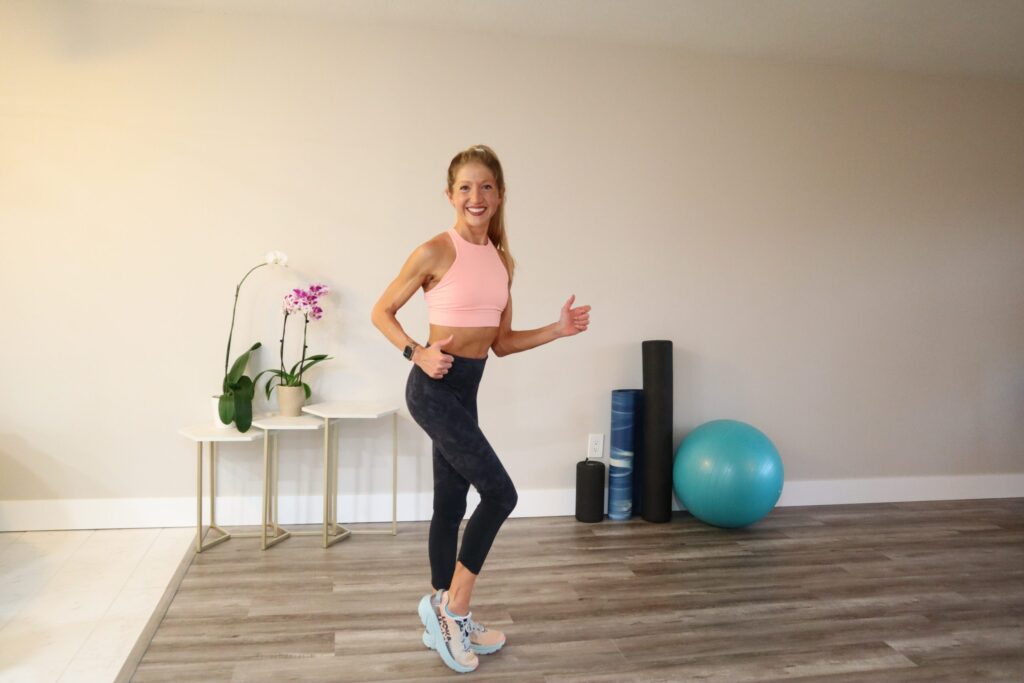Indoor Walking Workout – Think you need a treadmill or a long outdoor trail to get a good walk in? Think again.
Indoor walking workouts are an easy, low-impact, and surprisingly effective way to burn calories, improve heart health, and boost your mood—all without stepping outside your front door.
Whether you’re looking to stay active during bad weather, save time, or ease into fitness, this home-friendly exercise is a flexible and accessible option for people of all ages and fitness levels.
In this guide, we’ll break down the benefits, sample routines, and tips to help you turn walking in place into a powerful part of your daily fitness routine.
Why Choose Indoor Walking Workouts?
Walking is one of the most natural and underrated forms of exercise. And with an indoor version, you can enjoy all the benefits without worrying about traffic, uneven sidewalks, or bad weather.
Benefits of Indoor Walking Workouts
Convenience: No gym membership or fancy equipment needed. You can start right now in your living room.
Low-impact: Easy on the joints, making it ideal for beginners, seniors, or those recovering from injury.
Boosts metabolism: Helps with fat burning and can aid in weight loss when done consistently.
Mood booster: Walking releases endorphins that fight stress, anxiety, and even mild depression.
Customizable: You can change the pace, add strength moves, or follow along with guided videos.
What Muscles Does Indoor Walking Work?
Indoor walking may seem simple, but it can activate a wide range of muscles, especially when you add variations and movement.
- Legs – Quads, hamstrings, calves, and glutes are all engaged.
- Core – Keeps your body stable and supports balance.
- Arms – Add arm swings or light weights for an upper-body burn.
- Back and shoulders – Help with posture and support upper body movements.
How Many Calories Can You Burn with Indoor Walking?
Calorie burn depends on your intensity, duration, and body weight. But here’s a general breakdown:
Light walking (slow pace): ~150–200 calories per 30 minutes
Moderate pace with movements: ~200–300 calories per 30 minutes
Fast-paced interval walking: 300+ calories per 30 minutes
By increasing your steps per minute or adding simple moves like knee lifts or arm raises, you can turn up the intensity and torch more calories.
Best Indoor Walking Exercises to Try
You can create your walking routine by combining these effective moves:
- March in Place
How to do it: Stand tall and lift your knees one at a time like you’re walking.
Tips: Swing your arms to engage your upper body.
- Side Steps
How to do it: Step to the right, then to the left in a smooth, controlled motion.
Tips: Add a light squat as you step to engage the glutes.
- High Knees
How to do it: March in place but lift your knees as high as your hips.
Tips: Pump your arms and pick up the pace to increase your heart rate.
- Heel Taps
How to do it: Tap your heels forward one at a time while alternating arms.
Tips: Keep your back straight and stay on the balls of your feet.
- Knee Lifts with Twist
How to do it: Raise one knee and twist your torso to bring the opposite elbow toward it.
Tips: This activates your core and improves coordination.
- Step Touch with Arm Reach
How to do it: Step out to the side and touch the floor or reach overhead.
Tips: Use light dumbbells to increase resistance.
20-Minute Indoor Walking Workout Plan (No Equipment)
Here’s a quick routine you can do anywhere—even in a small space.
Warm-Up (3 minutes)
March in place – 1 minute
Side steps – 1 minute
Heel taps – 1 minute
Main Workout (15 minutes)
High knees – 1 minute
March with arm circles – 2 minutes
Step touch with squats – 2 minutes
Walking lunges or alternating knee lifts – 2 minutes
Repeat the circuit one more time
Cool Down (2 minutes)
Light march – 1 minute
Forward bends and quad stretches – 1 minute
Pro Tip: Follow along with indoor walking videos on YouTube or fitness apps to stay motivated and add variety.
Tips for Maximizing Results
Track your steps: Use a fitness tracker or phone app to set daily step goals.
Stay consistent: Aim for at least 30 minutes of movement 5 days a week.
Add resistance: Use light dumbbells, resistance bands, or wear ankle weights for extra burn.
Mix it up: Combine your walk with bodyweight moves like squats or pushups.
Focus on posture: Keep your shoulders back, abs engaged, and spine neutral.
Who Should Try Indoor Walking?
Almost anyone can benefit from this type of workout, including:
Beginners starting their fitness journey
Busy professionals looking for a quick movement break
Seniors who want to stay mobile
People recovering from injury (with doctor approval)
Anyone avoiding high-impact cardio
Final Thoughts: Step Into Better Health—Right at Home
No treadmill? No problem. An indoor walking workout gives you all the benefits of traditional walking—from calorie burning and weight loss to improved mood and heart health—without needing to leave the house.
It’s safe, effective, and flexible. So whether you’re pacing during a conference call, stepping during TV time, or following a walking video, just remember: every step counts.
Get moving, stay consistent, and let your living room be your new favorite cardio space.








